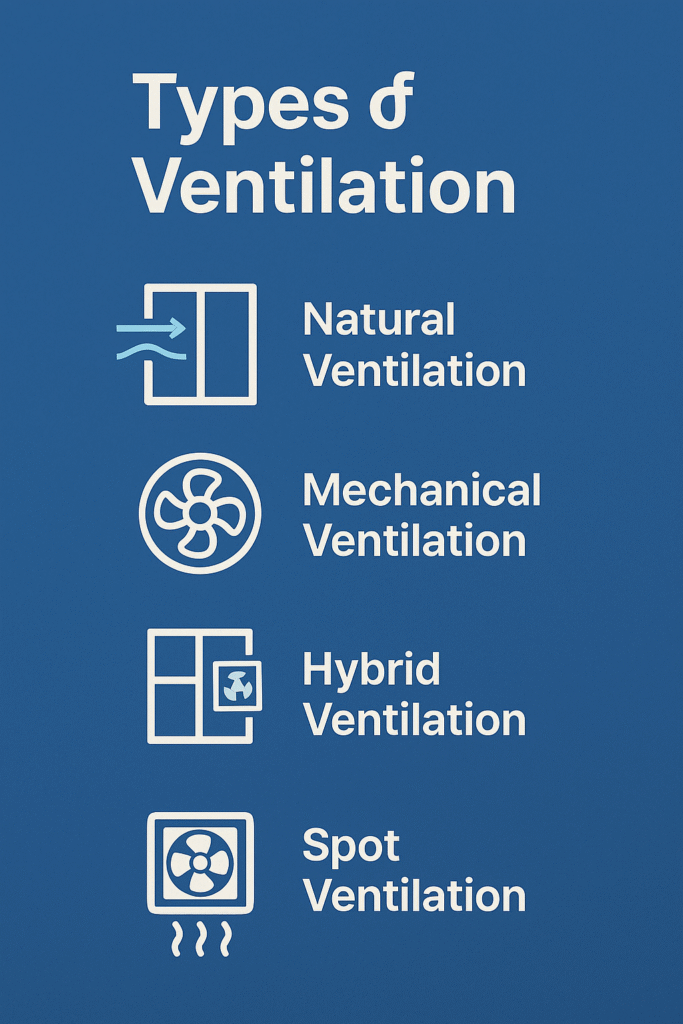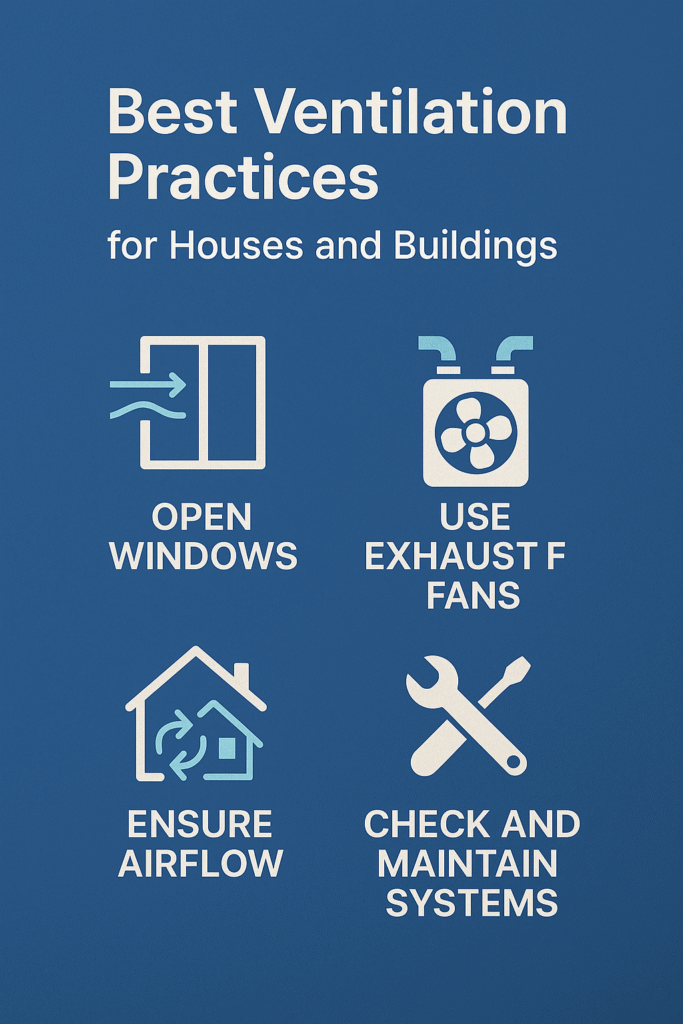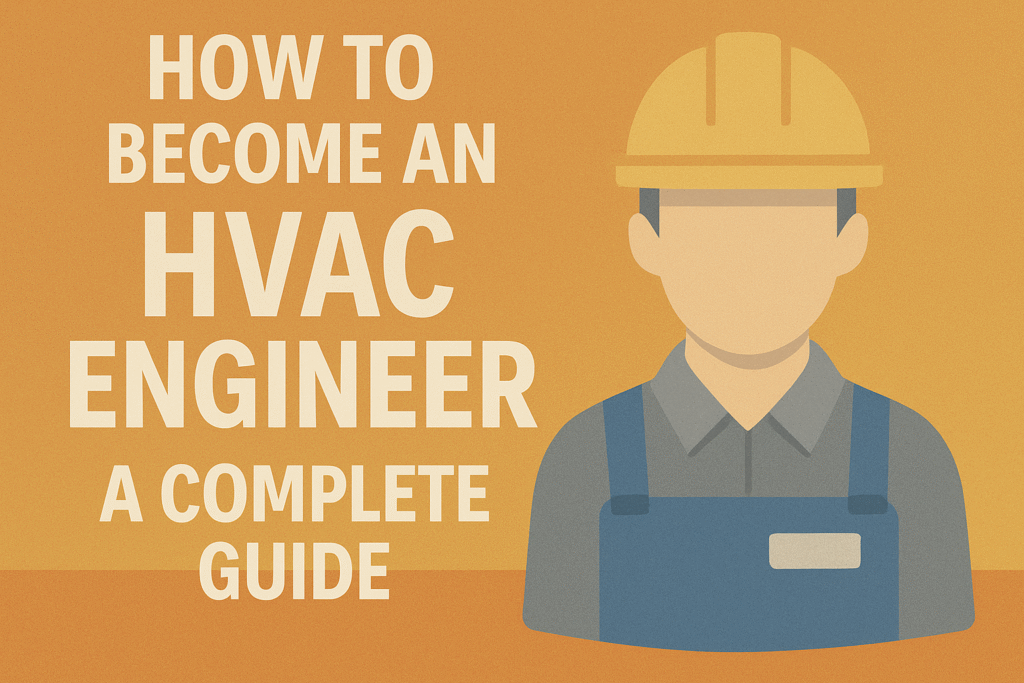Introduction
Ventilation is one of the most essential yet often overlooked components of a healthy and comfortable indoor environment. Whether you’re at home, in an office, or in a commercial building, the quality of air you breathe depends largely on how well the space is ventilated. Poor ventilation can lead to a buildup of pollutants, excessive humidity, and an uncomfortable indoor climate. On the other hand, proper ventilation improves indoor air quality, supports better health, and enhances overall comfort. This article provides a comprehensive guide to understanding ventilation, its various types, its importance, and practical tips for optimizing it in different settings.
What is Ventilation?
Ventilation refers to the process of supplying fresh outdoor air to an indoor space and removing stale air. It helps regulate indoor temperature, removes pollutants, controls moisture levels, and replenishes oxygen. Ventilation can occur naturally through openings like windows and doors, or mechanically through HVAC systems and exhaust fans. A well-ventilated space not only feels fresher but also supports respiratory health by reducing contaminants like dust, carbon dioxide, volatile organic compounds (VOCs), and allergens.
Types of Ventilation Systems

Natural Ventilation
Natural ventilation relies on the wind and thermal buoyancy to circulate air through a building. It typically involves operable windows, vents, louvers, and other architectural openings. Cross-ventilation, where air enters through one side and exits through another, is a common method. This type of ventilation is energy-efficient and cost-effective but depends heavily on outdoor weather conditions and building orientation.
Mechanical Ventilation
Mechanical ventilation uses powered systems like exhaust fans, supply fans, and air handling units to control airflow. It offers consistent performance regardless of external conditions and is ideal for enclosed or densely populated spaces. Examples include kitchen exhausts, bathroom fans, and centralized HVAC systems. Mechanical systems are essential in buildings where natural airflow is limited or impractical.
Hybrid or Mixed-Mode Ventilation
Hybrid ventilation combines both natural and mechanical methods. It utilizes natural airflow when conditions are favorable and switches to mechanical systems when needed. For instance, an office might rely on open windows during mild weather but use mechanical ventilation during extreme temperatures. This approach balances energy efficiency with performance.
Spot Ventilation
Spot ventilation targets specific areas that generate high levels of moisture or pollutants, such as kitchens, bathrooms, and laundry rooms. Common spot ventilation solutions include range hoods and bathroom exhaust fans. They help control localized humidity and remove contaminants at the source, preventing their spread throughout the building.
Balanced Ventilation (HRVs and ERVs)
Balanced ventilation systems, such as Heat Recovery Ventilators (HRVs) and Energy Recovery Ventilators (ERVs), supply and exhaust equal amounts of air, maintaining pressure equilibrium. HRVs recover heat from outgoing air to pre-warm incoming fresh air, while ERVs also transfer moisture. These systems are highly efficient and are increasingly used in modern airtight buildings to maintain air quality without sacrificing energy efficiency.
Importance of Proper Ventilation
Health Benefits
Good ventilation reduces the concentration of airborne pollutants and allergens, which can cause respiratory problems, allergies, and other health issues. It helps in diluting indoor air contaminants such as carbon monoxide, VOCs, and dust mites, ensuring a safer living environment.
Moisture and Mold Control
Without adequate ventilation, excess moisture can accumulate, leading to dampness and mold growth. Mold not only damages structures but also poses serious health risks. Proper airflow helps control humidity levels, especially in areas like bathrooms and basements, preventing structural damage and maintaining indoor air quality.
Enhanced Comfort
Proper ventilation helps regulate indoor temperatures and eliminate odors, making spaces more comfortable. It ensures a steady supply of fresh air, preventing stuffiness and improving overall well-being. This is particularly important in workplaces, where fresh air can enhance productivity and concentration.
Energy Efficiency
Ventilation plays a key role in maintaining energy efficiency. While natural ventilation can reduce the need for mechanical cooling, advanced systems like HRVs and ERVs recycle energy from outgoing air, lowering heating and cooling loads. Efficient ventilation systems contribute to lower utility bills and a smaller carbon footprint.
Best Ventilation Practices for Homes and Buildings

Maximize Cross Ventilation
Design your home or building to allow air to flow from one side to the other. Position windows and vents strategically to create a path for airflow. Use open-plan layouts and minimize barriers to allow air to move freely through spaces.
Install Effective Exhaust Systems
Use exhaust fans in high-moisture areas such as bathrooms and kitchens to remove humidity and odors. Ensure they are vented to the outside, not just into attics or ceilings, to prevent internal moisture buildup.
Maintain HVAC Filters Regularly
Clogged or dirty filters can restrict airflow and reduce the effectiveness of your ventilation system. Clean or replace filters as recommended by the manufacturer to ensure optimal air quality and system performance.
Consider Smart Ventilation Controls
Smart ventilation systems can adjust airflow based on indoor air quality sensors, occupancy, or outdoor weather conditions. These systems help maintain optimal conditions while minimizing energy use, especially in commercial or smart homes.
Ventilation in Different Building Types
Residential Buildings
In homes, ventilation is vital for health, comfort, and energy savings. Natural ventilation can be effective when designed well, but mechanical systems are essential in modern airtight homes. Spot ventilation in kitchens and bathrooms helps manage moisture and pollutants, while whole-house systems ensure consistent air quality.
Commercial and Office Buildings
Ventilation in commercial spaces must address higher occupancy and varied activities. Mechanical systems with demand-controlled ventilation (DCV) help maintain air quality based on occupancy levels. Integration with HVAC systems ensures thermal comfort, while advanced filtration systems support health and productivity.
Industrial Applications
Industrial facilities often deal with high levels of pollutants and require specialized ventilation systems. Local exhaust systems remove contaminants at the source, while general ventilation ensures a safe working environment. Proper ventilation in industries also ensures compliance with occupational health and safety standards.
Common Mistakes to Avoid
Overventilation
Introducing too much outdoor air can increase energy costs for heating and cooling. Overventilation can also lead to drafts and discomfort. Balance is key—use energy recovery systems and smart controls to optimize airflow.
Underventilation
Insufficient ventilation can lead to stale air, high humidity, and pollutant buildup. It can cause health problems and structural issues over time. Ensure your ventilation system is sized appropriately for your space and occupancy levels.
Poor Ductwork Design
Improper duct design can lead to uneven airflow, noise issues, and inefficiencies. Ensure ducts are properly sized, sealed, and maintained. Avoid long, sharp bends and unnecessary restrictions that can impede airflow.
Conclusion
Ventilation is a cornerstone of indoor air quality, comfort, and energy efficiency. Whether through natural airflow or advanced mechanical systems, ensuring your spaces are well-ventilated can have a profound impact on your health, your energy bills, and the longevity of your building. By understanding the different types of ventilation and implementing best practices, homeowners, builders, and facility managers can create healthier, more sustainable indoor environments. Don’t underestimate the power of fresh air—invest in proper ventilation and breathe the difference.


